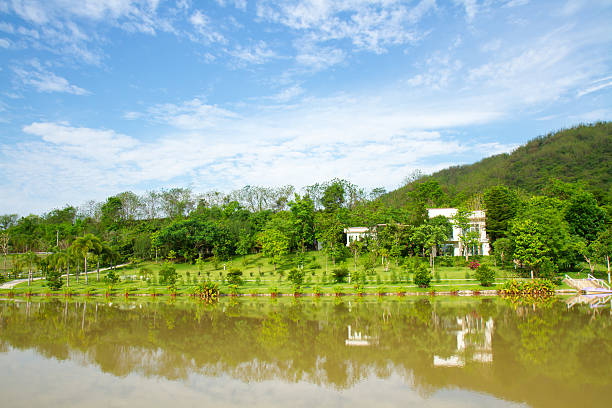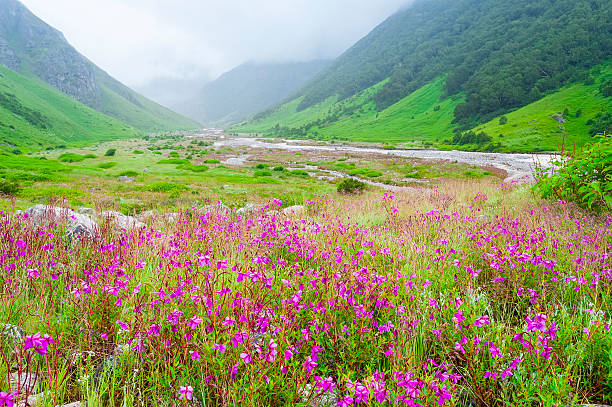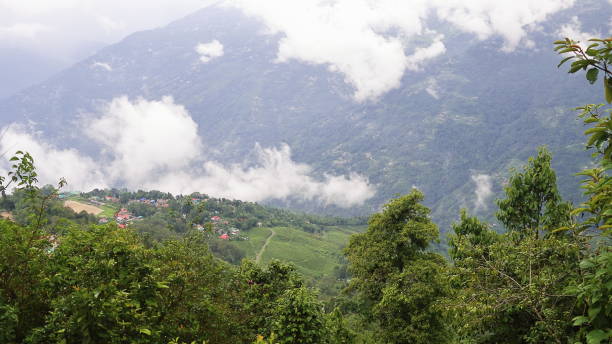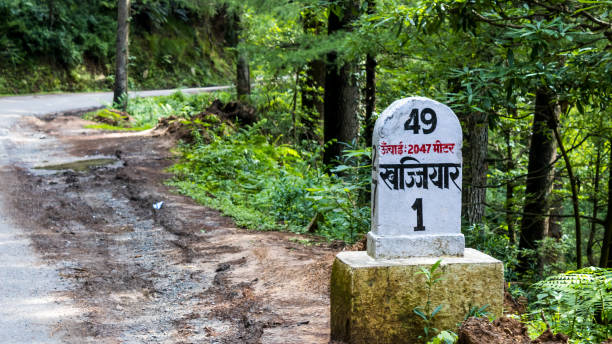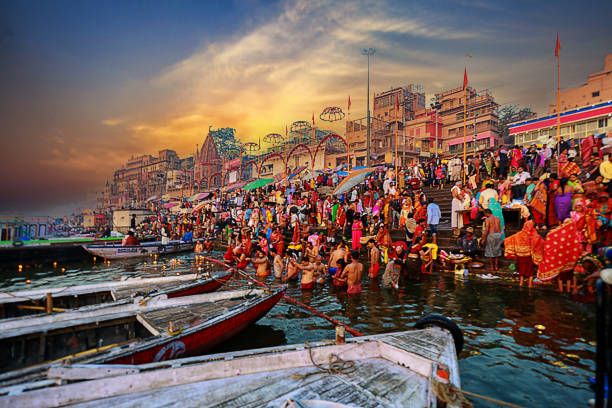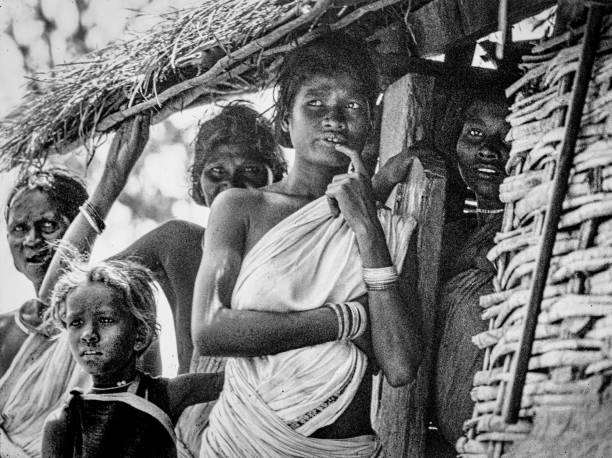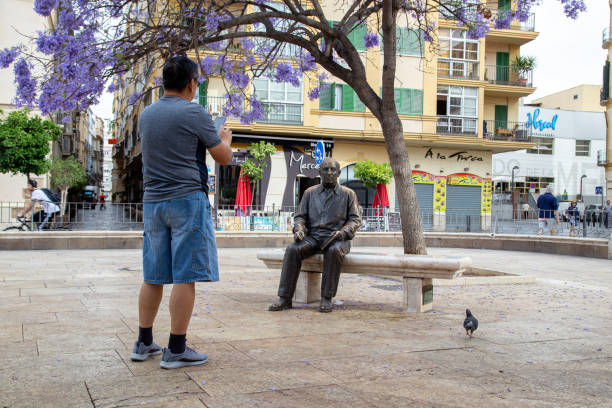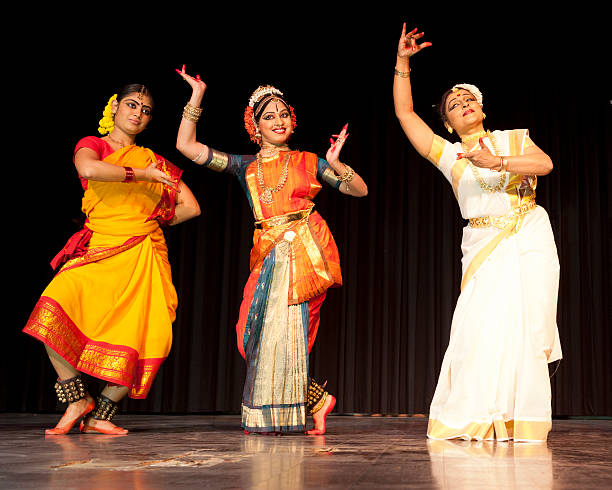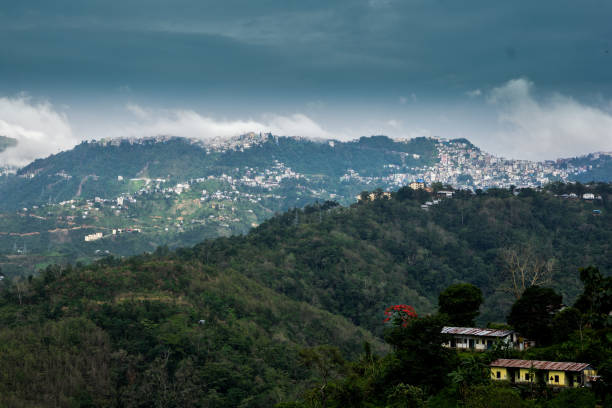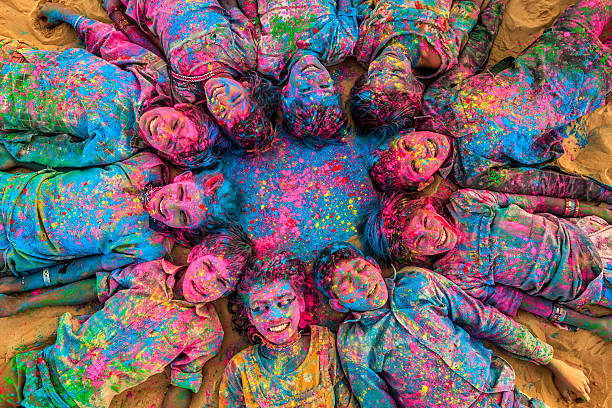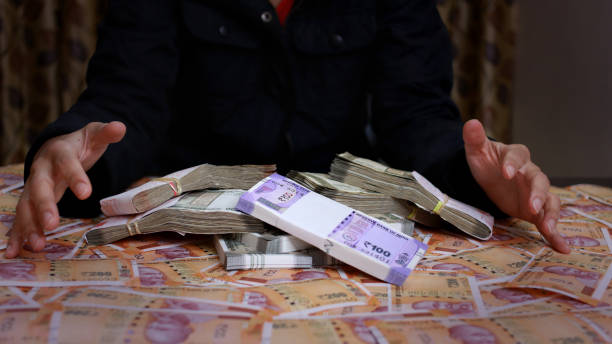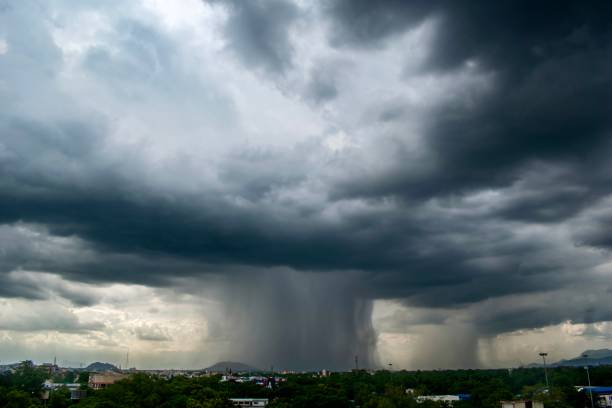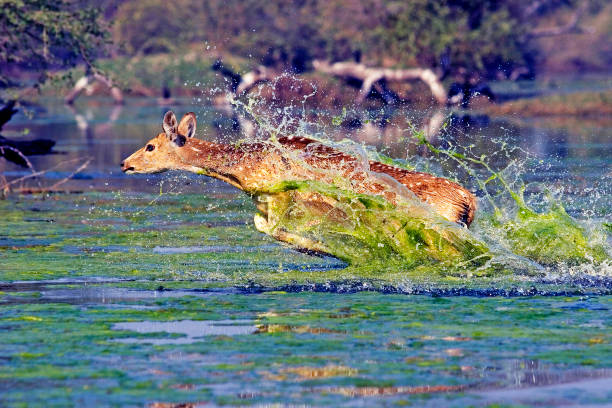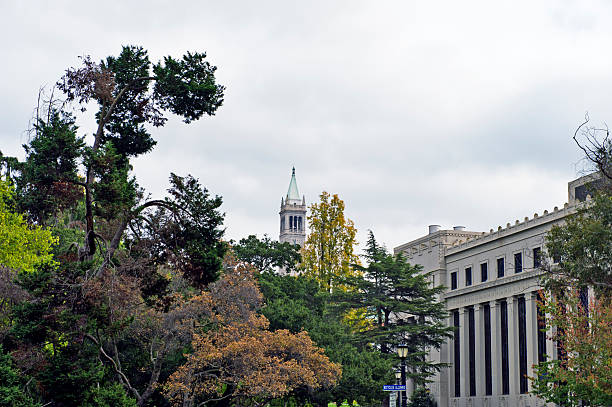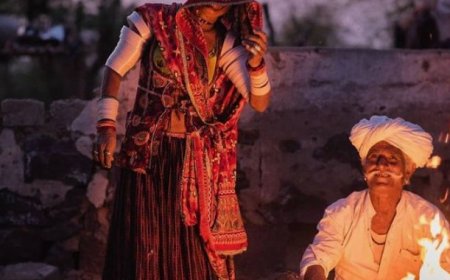The Sacred 12 Jyotirlingas: A Journey Through Lord Shiva's Divine Light
Explore India's most revered Shiva shrines, each a unique symbol of spiritual enlightenment and mythological significance.

The "12 Jyotirlingas" refer to twelve sacred shrines of Lord Shiva located across India. The word "Jyotirlinga" translates to "lingam of light," symbolizing Lord Shiva's infinite and luminous presence. These sites are believed to be places where Shiva manifested as a fiery column of light.
Visiting these 12 Jyotirlingas is considered a highly auspicious pilgrimage in Hinduism, believed to cleanse sins and lead to spiritual enlightenment. Each Jyotirlinga has its own unique mythological story and significance.
The 12 Jyotirlingas of India
Here's a list of the 12 Jyotirlingas along with their locations:
-
Somnath Jyotirlinga
- Location: Prabhas Patan, Gir Somnath, Gujarat
- Significance: Traditionally considered the first Jyotirlinga, it symbolizes resilience and the eternal nature of Shiva.

Here are the top 3 points about the Somnath Jyotirlinga temple:
-
First Jyotirlinga: It's considered the foremost of the twelve sacred Jyotirlingas of Lord Shiva, making it a paramount pilgrimage site for Shiva devotees.
-
Symbol of Resilience: The temple has been destroyed and rebuilt numerous times over centuries, most notably by Mahmud of Ghazni. Its repeated resurrection signifies the enduring faith of Hindus and India's cultural resilience.
-
Architectural Grandeur & Unique Features: Built in the Chalukya style, the current temple boasts intricate carvings and a grand design. It also features the "Baan Stambh," indicating a direct alignment with the South Pole with no land in between.
Visiting Somnath Jyotirlinga temple is quite accessible from almost any part of India, with good connectivity by air, rail, and road. Here's the easiest way:
1. By Air (Fastest):
The most convenient airports are:
-
Diu Airport (DIU): Approximately 65 km away (1.5-2 hours by taxi). This is the closest airport and often the preferred choice if flights are available from your origin.
-
Rajkot Airport (RAJ): About 200 km away (4-5 hours by taxi). This airport generally offers more flight connections from major Indian cities.
-
Ahmedabad (AMD): Though further (around 400 km), Ahmedabad has the busiest international airport in Gujarat, offering the most flight options. From Ahmedabad, you can take a connecting train or bus, or hire a direct taxi.
Upon arrival at any of these airports, taxis and private cabs are readily available to take you directly to Somnath.
2. By Train (Convenient & Budget-Friendly):
Somnath has its own railway station (SMNH), but it's small.
-
Veraval Junction (VRL): This is the nearest major railway station, just about 7 km from the Somnath temple. It's well-connected by direct trains from major cities like Ahmedabad and Mumbai. From Veraval, you can easily find auto-rickshaws or local taxis to the temple.
3. By Road (Flexible):
Somnath is well-connected by an extensive network of national and state highways.
-
State Transport Buses: Gujarat State Road Transport Corporation (GSRTC) and private bus operators run regular services to Somnath from various cities in Gujarat (like Ahmedabad, Rajkot, Dwarka, Diu, Junagadh) and neighboring states.
-
Private Car/Taxi: Hiring a private car or taxi offers the most flexibility, allowing you to stop at your leisure and explore nearby attractions.
For an easy trip, flying to Diu and taking a short taxi ride is often the simplest, especially if time is a constraint.
2.Mallikarjuna Jyotirlinga
-
- Location: Srisailam, Andhra Pradesh
- Significance: Situated atop the Nallamala Hills, it signifies the union of Lord Shiva and Goddess Parvati and is also a Shakti Peeth.

Here are the top 3 points about the Mallikarjuna Jyotirlinga temple:
-
Unique Dual Significance (Jyotirlinga & Shakti Peetha): Mallikarjuna is one of the rare and highly revered temples in India that houses both a Jyotirlinga of Lord Shiva and a Shakti Peetha of Goddess Parvati (as Bhramaramba Devi) within the same complex. This makes it incredibly sacred for devotees of both Shiva and Shakti.
-
Ancient History and Architectural Grandeur: Located on the Nallamala Hills in Srisailam, Andhra Pradesh, the temple boasts a rich history with contributions from various dynasties like the Satavahanas, Chalukyas, and Vijayanagara rulers. Its Dravidian style architecture features imposing gopurams (gateway towers), intricately carved pillars, and fort-like walls.
-
Devotee Accessibility and Legends: Unlike many temples, devotees are traditionally allowed to touch the main Shiva Linga and perform Abhishekham (ritual bathing) themselves, fostering a deep personal connection. Legends associated with the temple include Lord Kartikeya's stay here and Goddess Parvati transforming into a bee (Bhramaramba) to defeat a demon, with some even reporting hearing a buzzing sound near the Bhramaramba shrine.
-
Unique Dual Significance (Jyotirlinga & Shakti Peetha): Mallikarjuna is one of the rare and highly revered temples in India that houses both a Jyotirlinga of Lord Shiva and a Shakti Peetha of Goddess Parvati (as Bhramaramba Devi) within the same complex. This makes it incredibly sacred for devotees of both Shiva and Shakti.
-
Ancient History and Architectural Grandeur: Located on the Nallamala Hills in Srisailam, Andhra Pradesh, the temple boasts a rich history with contributions from various dynasties like the Satavahanas, Chalukyas, and Vijayanagara rulers. Its Dravidian style architecture features imposing gopurams (gateway towers), intricately carved pillars, and fort-like walls.
-
Devotee Accessibility and Legends: Unlike many temples, devotees are traditionally allowed to touch the main Shiva Linga and perform Abhishekham (ritual bathing) themselves, fostering a deep personal connection. Legends associated with the temple include Lord Kartikeya's stay here and Goddess Parvati transforming into a bee (Bhramaramba) to defeat a demon, with some even reporting hearing a buzzing sound near the Bhramaramba shrine.
Visiting Mallikarjuna Jyotirlinga from Anywhere: Your Easy Guide
To reach the sacred Mallikarjuna Jyotirlinga in Srisailam, Andhra Pradesh, the most straightforward approach from any global location is to fly into Rajiv Gandhi International Airport (HYD) in Hyderabad, India. Hyderabad serves as a major hub with excellent international and domestic flight connections.
Once in Hyderabad, you have several convenient onward travel options to Srisailam:
-
By Road (Taxi/Private Cab): This is the quickest and most comfortable method, with the journey taking approximately 4-5 hours to cover the 220 km distance. It's recommended to pre-book a taxi, especially for late arrivals, and be prepared for winding ghat road sections as you approach Srisailam.
-
By Bus: Andhra Pradesh State Road Transport Corporation (APSRTC) provides regular and economical bus services from Hyderabad's Mahatma Gandhi Bus Station (MGBS) directly to Srisailam.
-
By Train and Road: For a combination journey, take a train from Hyderabad to Markapur Road (MRK) railway station, which is about 85 km from Srisailam, or to Nandyal, roughly 160 km away. From either station, local taxis or buses are readily available for the final leg to the temple.
Must-Try Food in Srisailam:
As a significant pilgrimage site, Srisailam's culinary scene is predominantly vegetarian South Indian cuisine.
-
Temple Annaprasadam: Don't miss the opportunity to partake in the free, blessed meals (Annaprasadam) offered by the temple, providing a simple yet deeply spiritual dining experience.
-
Authentic Andhra Dishes: Local eateries serve classic Andhra fare, including popular items like dosas, idlis, vadas, various flavorful curries, and different rice preparations such as the tangy Pulihora (tamarind rice).
-
Local Sweets and Snacks: Explore the local shops for traditional Andhra sweets and snacks, offering a taste of the region's unique flavors.
3.Mahakaleshwar Jyotirlinga
-
- Location: Ujjain, Madhya Pradesh
- Significance: Known for its unique south-facing idol and the sacred Bhasma Aarti (worship with ash), it represents Shiva as the lord of time and death.
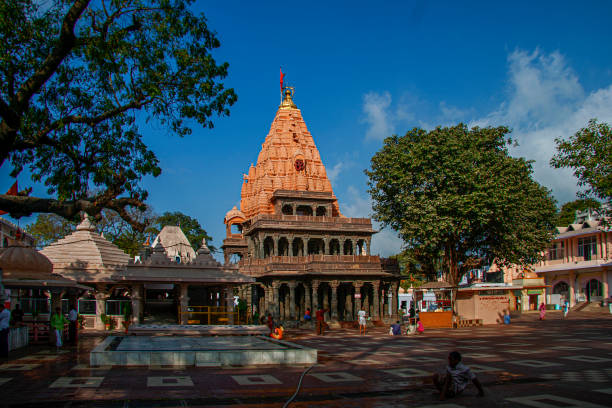
Here are the top 3 points about Mahakaleshwar Jyotirlinga:
-
Swayambhu and Dakshinamukhi Lingam: It is one of the twelve Jyotirlingas, and uniquely, the Shiva Lingam here is believed to be "Swayambhu" (self-manifested), not established by human hands. Furthermore, it is the only Jyotirlinga that faces south (Dakshinamukhi), signifying Lord Shiva as the master of death and time (Mahakal).
-
Bhasma Aarti: The temple is renowned for its unique "Bhasma Aarti" (ash ritual) performed daily at dawn. In this sacred ritual, the Lingam is bathed with sacred ash, symbolizing the cycle of creation, preservation, and destruction, and a deep spiritual experience for devotees.
-
Historical and Spiritual Significance: Located in Ujjain, an ancient city with deep spiritual roots, Mahakaleshwar is considered the "Guardian of Time." Its mention in Puranas and ancient texts, along with its association with the Kumbh Mela, underscores its profound historical and religious importance as a powerful center of Shiva worship.
Reaching Mahakaleshwar Jyotirlinga is quite straightforward, as Ujjain is a well-connected city.
-
By Air: The nearest airport is Devi Ahilyabai Holkar Airport (IDR) in Indore, which is approximately 55 km away. From the airport, you can easily hire a taxi or take a bus to Ujjain. The journey usually takes about 1-1.5 hours.
-
By Train: Ujjain Junction (UJN) is the city's main railway station, and it's well-connected to major cities across India. Once you arrive, the temple is only about 2 km from the station. You can take an auto-rickshaw or a cycle-rickshaw, which are readily available outside the station.
-
By Road: Ujjain has a strong road network with regular bus services from cities like Indore, Bhopal, Ahmedabad, and others. You can also hire a private taxi or drive your own vehicle. The city is connected by National and State Highways, making road travel comfortable.
Once in Ujjain, the temple is centrally located, and local transport like auto-rickshaws and e-rickshaws can take you directly to the temple gate.
4.Omkareshwar Jyotirlinga
-
- Location: Mandhata Island (on the Narmada River), Madhya Pradesh
- Significance: The island itself is shaped like the sacred "Om" symbol, and it's a dual shrine with Amareshwar on the mainland.
-

Omkareshwar Jyotirlinga: A Sacred Island in the Narmada
Omkareshwar is a revered Hindu pilgrimage site, home to one of the twelve Jyotirlingas of Lord Shiva. What makes it unique is its location on an island, Mandhata (or Shivapuri), in the Narmada River, which is said to be shaped like the sacred "Om" symbol. This spiritual significance, combined with the presence of another ancient temple, Mamleshwar, on the mainland across the river (often considered a twin Jyotirlinga), makes it a profoundly holy destination. Devotees believe that a pilgrimage here can bring salvation and fulfill desires.
To reach Omkareshwar Jyotirlinga from any place:
-
By Air: Fly to Indore (IDR) Airport, about 80-90 km away. From there, hire a taxi or take a bus to Omkareshwar.
-
By Train: The nearest major station is Khandwa Junction (KNW), approximately 70 km away, with good connections across India. You can also reach Indore Junction (INDB) and then take a bus/taxi. Omkareshwar Road (OM) is a closer but smaller station.
-
By Road: Omkareshwar is well-connected by road, with frequent bus services from Indore, Ujjain, and other nearby cities. Taxis are also readily available.
Food in Omkareshwar:
Being a holy town, Omkareshwar predominantly offers vegetarian food. You'll find numerous small eateries and restaurants catering to pilgrims.
-
Temple Prasadalay: The Shri Omkareshwar Jyotirlinga temple trust runs "Omkar Prasadalay" near the Mamleshwar Setu, offering wholesome, sattvic (pure vegetarian) meals at a nominal fee. This is a highly recommended and budget-friendly option.
-
Local Eateries: Expect typical Indian fare, including thalis (platter meals), dal-baati-churma, poha, samosas, jalebis, and various other snacks and sweets.
-
Restaurants: There are a few restaurants like Onkar Bhojanalay, Maa Vaishnavi Restaurant, and Krishna Prasadam Restaurant that offer a variety of Indian vegetarian dishes.
-
No Non-Vegetarian Food: Due to the sacred nature of the place, non-vegetarian food is generally not available.
5.Kedarnath Jyotirlinga
-
- Location: Kedarnath, Uttarakhand (Garhwal Himalayas)
- Significance: One of the highest located Jyotirlingas, accessible only for about six months a year due to extreme weather, it's a part of the Char Dham pilgrimage.
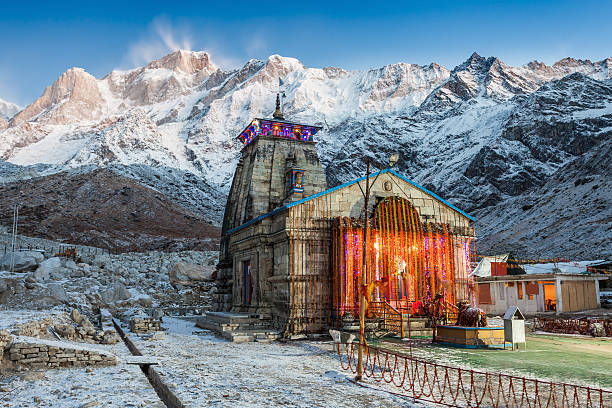
Kedarnath Jyotirlinga: Lord of the Himalayas
Kedarnath is one of the most sacred pilgrimage sites for Hindus, nestled amidst the majestic Garhwal Himalayas in Uttarakhand. It is one of the twelve Jyotirlingas, believed to be the hump of Lord Shiva, who took the form of a bull to evade the Pandavas. The ancient temple, accessible only for a few months a year due to heavy snowfall, stands as a testament to unwavering faith, surviving natural calamities like the devastating 2013 floods. Its remote, high-altitude location imbues it with immense spiritual energy, drawing devotees seeking liberation and blessings.
How to Reach Kedarnath from Any Place:
Reaching Kedarnath requires a multi-modal journey, as the temple is not directly accessible by road.
-
By Air: The nearest airport is Jolly Grant Airport (DED) in Dehradun, approximately 250 km from Kedarnath. From Dehradun, you can hire a taxi or take a bus to Gaurikund, the last motorable point. Alternatively, helicopter services are available from various helipads like Phata, Guptkashi, or Sirsi directly to Kedarnath, offering a faster (though more expensive) option.
-
By Train: The closest major railway stations are Rishikesh (RKSH) and Haridwar (HW), around 216 km and 250 km from Kedarnath respectively. These stations are well-connected to major Indian cities. From there, take a bus or taxi to Sonprayag/Gaurikund.
-
By Road: Buses and taxis are available from major towns in Uttarakhand like Haridwar, Rishikesh, Dehradun, and Srinagar to Gaurikund.
The Trek: From Gaurikund, it's a challenging but rewarding 16 km trek to Kedarnath. Ponies, mules, and palanquin services are available for those unable to trek.
Famous Food in Kedarnath:
Being a pilgrimage site, only vegetarian food is available in Kedarnath. You'll find simple, wholesome, and energy-providing meals to sustain pilgrims.
-
Aloo Puri: A staple breakfast, consisting of deep-fried bread with spicy potato curry.
-
Mandua Ki Roti: A nutritious flatbread made from finger millet (ragi), often paired with local curries.
-
Jhangora Ki Kheer: A sweet pudding made from barnyard millet, milk, and sugar.
-
Aloo Ke Gutke: Simple yet delicious boiled potatoes seasoned with local spices.
-
Chainsoo: A protein-rich black Urad Dal dish.
-
You'll find many small dhabas and eateries offering these traditional Himalayan and North Indian dishes along the trek route and near the temple.
6.Bhimashankar Jyotirlinga
-
- Location: Pune district, Maharashtra
- Significance: Nestled amidst dense forests in the Sahyadri range, it's believed to be where Shiva took the form of Bhima to defeat a demon.
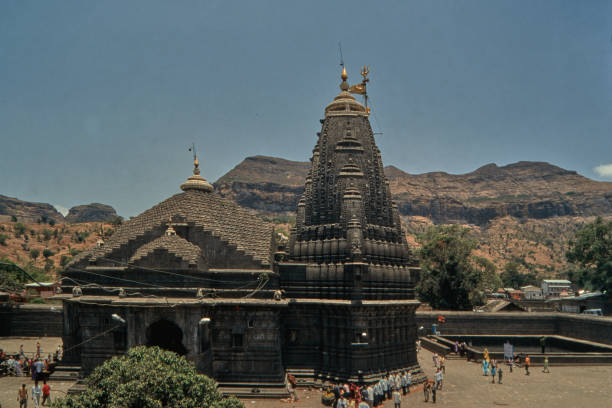
Bhimashankar Jyotirlinga: Amidst the Sahyadri Hills
Bhimashankar is another significant Jyotirlinga, located in the Sahyadri mountain range of Maharashtra, within a dense forest that is also a wildlife sanctuary. Legend has it that Lord Shiva manifested here to defeat the demon Tripurasura, and the sweat from his body is believed to have formed the Bhima River, which originates from this spot. The temple's architecture is a blend of Nagara and Hemadpanthi styles, with intricate carvings. It's a place of deep spiritual importance and also a haven for nature lovers due to its rich biodiversity, including the rare Malabar Giant Squirrel.
How to Reach Bhimashankar from Any Place:
Reaching Bhimashankar requires reaching Pune or Mumbai first, and then proceeding by road.
-
By Air: The nearest major airport is Pune Airport (PNQ), approximately 125 km away, or Chhatrapati Shivaji Maharaj International Airport (BOM) in Mumbai, about 220 km away. From Durgapur, you would fly to either Pune or Mumbai. From the airports, you can hire a taxi or take a bus to Bhimashankar.
-
By Train: The nearest major railway station is Pune Junction (PUNE). From Durgapur, you can take a direct train to Pune, though it will be a long journey (around 30-35 hours). From Pune, you can take a bus or hire a taxi to Bhimashankar. Kalyan Junction (near Mumbai) is another option, but Pune is generally more convenient for onward travel to Bhimashankar.
-
By Road: Bhimashankar is well-connected by road to Pune, Mumbai, and other nearby towns. State transport buses and private taxis are readily available from Pune. The drive from Pune takes around 3-4 hours through scenic hilly terrain. From Durgapur, a direct road journey is very long (over 1700 km) and not recommended for most travelers.
Food in Bhimashankar:
Similar to other pilgrimage sites, Bhimashankar primarily offers vegetarian food. You'll find local eateries and small restaurants.
-
Local Maharashtrian Cuisine: Expect authentic Maharashtrian dishes like Misal Pav (a spicy sprouted curry with bread), Vada Pav, Poha, and Puri Bhaji.
-
Simple Thalis: Many places offer simple thalis (platter meals) with rice, dal, vegetables, and chapatis.
-
Tea and Snacks: Tea stalls and small shops offering snacks are common, especially on the road leading to the temple.
-
MTDC Bhimashankar: The Maharashtra Tourism Development Corporation (MTDC) guest house often has a restaurant, which can be a reliable option for a meal.
-
Avoid expectations of elaborate multi-cuisine restaurants; the focus is on providing wholesome, sattvic food for pilgrims.
7.Kashi Vishwanath Jyotirlinga
-
- Location: Varanasi, Uttar Pradesh
- Significance: Located in the holy city of Varanasi (Kashi), it's considered one of the most sacred Hindu shrines, believed to grant liberation (moksha).

-
Trimbakeshwar Jyotirlinga
- Location: Trimbak, Nashik district, Maharashtra
- Significance: Unique for its lingam having three faces representing Brahma, Vishnu, and Shiva, and it's also near the source of the Godavari River.

-
Vaidyanath Jyotirlinga
- Location: Deoghar, Jharkhand
- Significance: Also known as Baba Baidyanath Dham, it's revered as the "healer" and has connections to the demon king Ravana.

-
Nageshwar Jyotirlinga
- Location: Near Dwarka, Gujarat
- Significance: Associated with the ancient Darukavana forest, it symbolizes protection from negativity and evil forces.

-
Ramanathaswamy Jyotirlinga
- Location: Rameswaram Island, Tamil Nadu
- Significance: Believed to be established and worshipped by Lord Rama before his journey to Lanka, it's a significant part of the Char Dham pilgrimage.

-
Grishneshwar Jyotirlinga
- Location: Ellora, near Aurangabad, Maharashtra
- Significance: Located close to the famous Ellora Caves, it's considered the last of the 12 Jyotirlingas and embodies faith and simplicity.

These twelve sites are deeply woven into the fabric of Hindu mythology and spirituality, attracting millions of devotees each year who embark on these sacred journeys to connect with the divine power of Lord Shiva.









